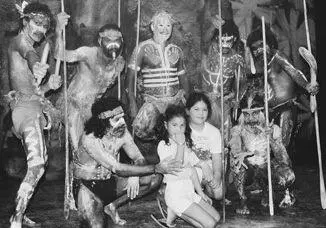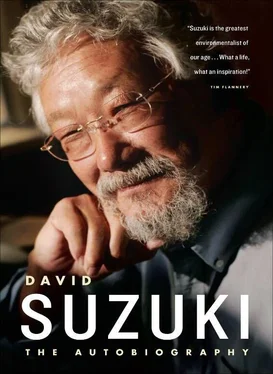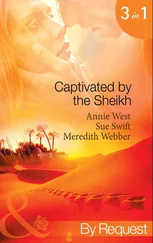Bob wanted to know whether Lake Pedder, a pristine glacial lake in Tasmania's southwest wilderness that had been flooded in the 1970s to generate hydroelectric power, could be restored. Was it feasible? Did Tasmania need the energy the inundated lake supplied, and would the original values of that ecosystem be able to recover if the dam in the Tasmanian Wilderness World Heritage Area was removed? To study such matters, he needed money, and I offered him enough for someone to do the work. It was the early days of the David Suzuki Foundation, and I was pleased to be able to support an international project under our name.
The study showed that the energy supplied by the dam that had caused the flooding of Lake Pedder was a small part of the state's needs and could easily be given up without any economic disruption. The findings also suggested there existed sufficient residual vegetation and animal species around the lake to restore the original ecosystem if the water was permanently allowed to return to its natural flow. The study was released to the public, but, as with so many things in Tasmania, tearing down a dam seemed a regressive step to the powers that be and the idea was rejected with hardly a thought.

Sarika and Severn posing with David Hudson's dance troupe in Queensland
One of our most memorable visits to Australia occurred in 1991, when my father had recovered from my mother's death in 1984 and had regained some of his great zest for life. Dad adored our children, and we invited him to join us on a trip to Australia. He was thrilled to go, and with his genuine curiosity and his skills as a raconteur, he captivated all those he met down under. He was enchanted with the trees, the flowers, the birds, and the people — a whole world to fill his insatiable appetite for new experiences and knowledge.
With Georgina and Phil in tow, we made our way to Port Douglas. There Tara bought an inflatable vest for Dad, and we took the family out to the Great Barrier Reef on the Quicksilver . Dad's arthritis had gnarled his limbs and digits, so he looked like a twisted gnome, but he didn't let it slow him as he hobbled onto the float. We fitted him with mask, fins, and snorkel to go along with his protective vest, and in he jumped, hand in hand with Sarika. There was Dad at eighty-one, holding onto eight-year-old Sarika, paddling over to one of the “bommies,” a column of coral rising to the surface and easily encircled. I watched them swimming off and listened to their muffled exclamations through the snorkels: “Look at that!” “Over there!” “Grampa, Grampa, what is that?” It is one of my happiest memories.
SINCE THOSE EARLIEST VISITS, Tara and I have made several trips to Australia together, and during that time we have seen many changes. In the almost two decades since our first joint trip, the Great Barrier Reef has been changed by tourism, fishing, and the accumulation of effluents from cities, towns, and farmers' fields, which ultimately percolate through the reefs.
More recently, climate change has been responsible for coral bleaching over immense areas. Coral is more than one organism. An animal called a coelenterate, which is related to jellyfish, creates a hard shell around itself, a carbonaceous material we think of as the coral. The coelenterate harbors within it another species, a plant that provides energy through photosynthesis in return for the nutrition the animal captures. It's a classic example of symbiosis, a partnership in which both parts benefit from each other. The plants also confer color to the animal, and the Great Barrier Reef is a profusion of colors from purple to pink and green. The plant parts are extremely sensitive to temperature, and a rise in water temperature of just a degree or two can cause their death and hence the “bleaching” phenomenon of color loss. The animals can survive a season without their partners, but they then die if they are not reinfected with the plants.
Coral bleaching related to El Niño events unprecedented in their heat, duration, and shortened interval between are thought to be the basis for a global bleaching episode; El Niños are deviations from normal temperatures in the southern Pacific Ocean between South America and Australia. Coral reefs are oases of life, supporting a disproportionate abundance of life forms, and, as with tropical rain forests, disruption of their integrity represents a catastrophic threat to the ocean ecosystems of the world.
In 2003, when Tara and I again visited the Great Barrier Reef, it had visibly changed in both abundance of organisms and vitality. Dead stag coral littered the bottom, and the numbers and variety of fishes were noticeably diminished. (This is not a scientifically validated observation — it is subjective and anecdotal — but I think too much is at stake to ignore it.) Yet when we finally climbed back on the boat, the guides bubbled with enthusiasm, extolling the wonders of the reef and all its components. Part of that is their job; after all, we had paid a lot of money for the trip. But it is my impression that they really were enthusiastic and meant what they were saying.
Even in that short span since Tara and I had first visited this place in 1989, the degradation was perceptible to us. Because the guides had been working there only for a few years, however, they didn't have the same baseline for comparison. To tourists, the coral and fish are still dazzling in profusion and color, but I am sure an old-timer who has known the reef for decades will remember it in a state that no longer exists.
It was the same on our visit to the Serengeti Plain in Tanzania in eastern Africa. Our encounter with so many mammals filled us with wonder and delight that there still are such pristine areas with abundant wildlife — until we talked to some of the people who have lived there all their lives and remember a flourishing plain that no longer exists. Urban people like us live in such a degraded environment for wildlife that almost anything else looks rich and unspoiled. It's only when we dig deeper to find what the state of wildlife was decades or centuries before that we realize how much we are drawing down on nature's abundance.
ON THAT VISIT IN 2003, I was asked for the second time to be honorary patron of the Youth Conservation Corps (YCC), a program for youth who had dropped out of school but were unable to find jobs. The program gave them a stipend to spend six months a year learning how to rehabilitate the land, cleaning up soil and rivers, planting native species, making inventories of wildlife, and otherwise being trained for jobs in conservation. When Mike Rann had been minister for Aboriginal affairs in the Labor government of the state of South Australia in the 1990s, I met him, and we hit it off. I was asked to be the honorary patron of YCC, but when Labor was thrown out of office in 1993, the program was cancelled. Mike led the party back to power in 2001 and as state premier then resurrected the Youth Conservation Corps and asked me to return as honorary patron. I was delighted with the honor, and Tara and I attended a YCC event in Adelaide.
Once again, we were moved to see the dedication and enthusiasm of the kids. A young girl who seemed to have rings hanging from every part of her face and body enthused about her bird inventory: “I've seen twenty-five species right here in this field.” A young man with tattoos on his face, arms, and legs and a bush of hair that exploded from his head exulted about how great it was to be out here in the country and to be paid for it. We were taken to a large area of degraded land where the trees had long been cut down, the land overgrazed by sheep, and the soil overrun by grass and brush. “This will be Suzuki Forest, named in honor of our patron,” announced John Hill, the minister of environment. The Youth Conservation Corps will plant native trees on that land so that perhaps a couple of decades from now there will again be a young forest, one bearing the name of that Canadian bloke who used to visit Australia.
Читать дальше



![David Jagusson - Devot & Anal [Hardcore BDSM]](/books/485905/david-jagusson-devot-anal-hardcore-bdsm-thumb.webp)









